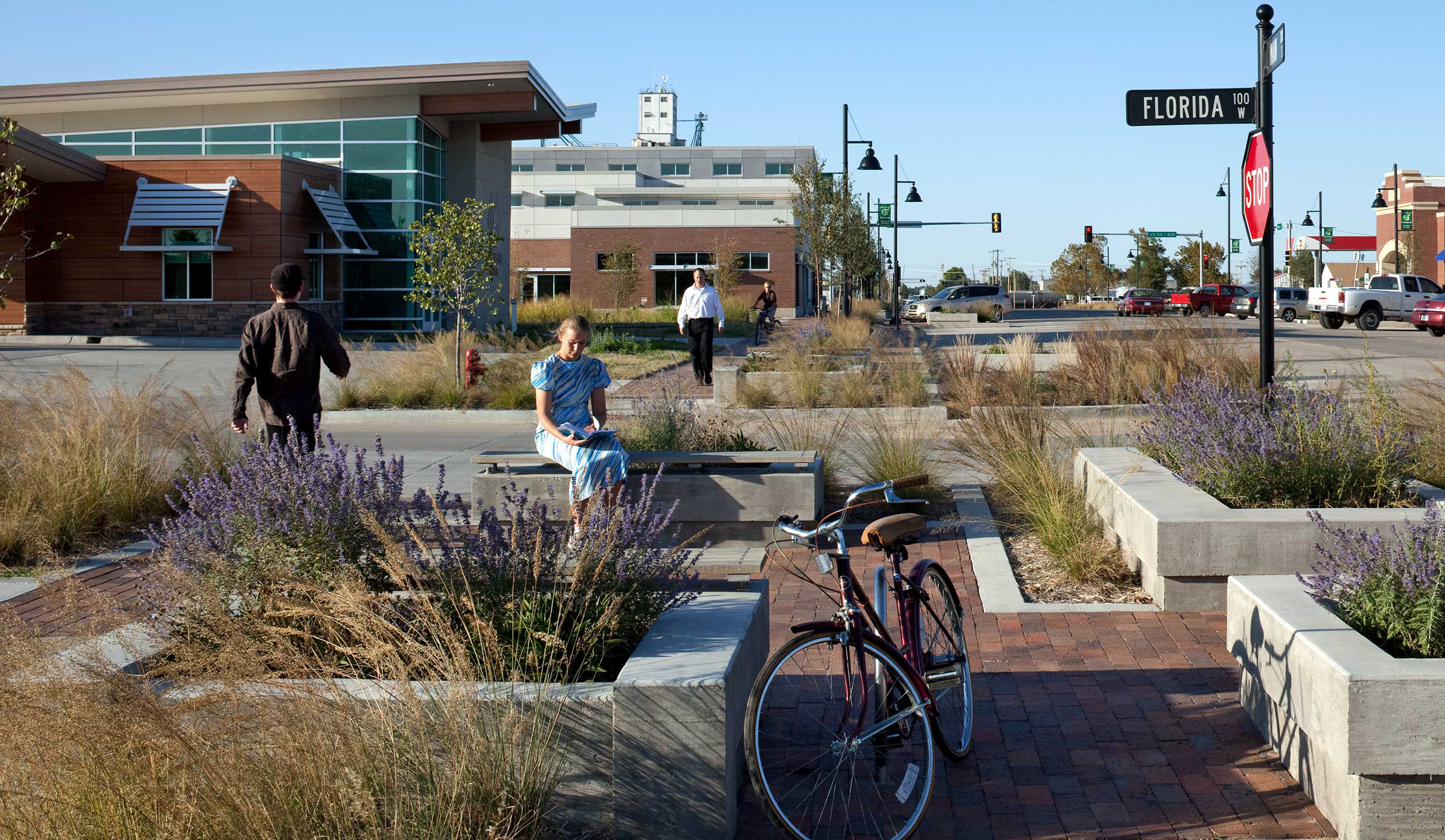
Lessons from Greensburg: The Project that Shaped a Practice – 10 Years Later
Ten years ago, an F5 tornado destroyed more than 90% of Greensburg, Kansas. Following the disaster, Governor Sebelius and the AIA contacted BNIM to assist in rebuilding and recovery due to our history of helping communities in the wake of natural disasters.
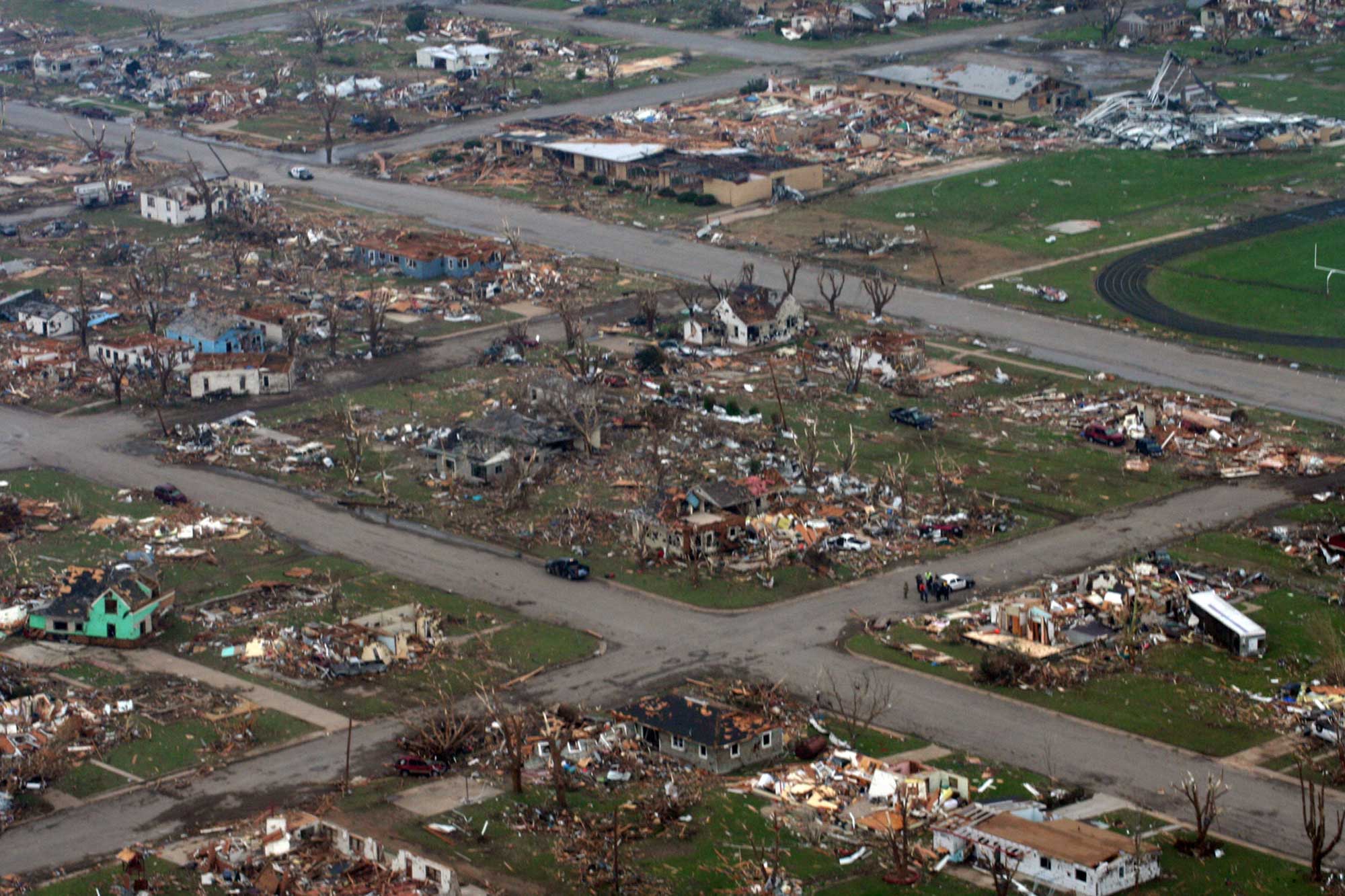 THE DEVASTATION IN GREENSBURG FOLLOWING THE MAY 4, 2007, TORNADO
THE DEVASTATION IN GREENSBURG FOLLOWING THE MAY 4, 2007, TORNADO
We immediately immersed ourselves within the community to help shape the future of Greensburg, which in turn shaped the future of BNIM. The community’s commitment to resiliency has informed our process and work, and the focus on human-purposed integrated design refocused our practice. With Greensburg, and because of Greensburg, we are Building Positive.
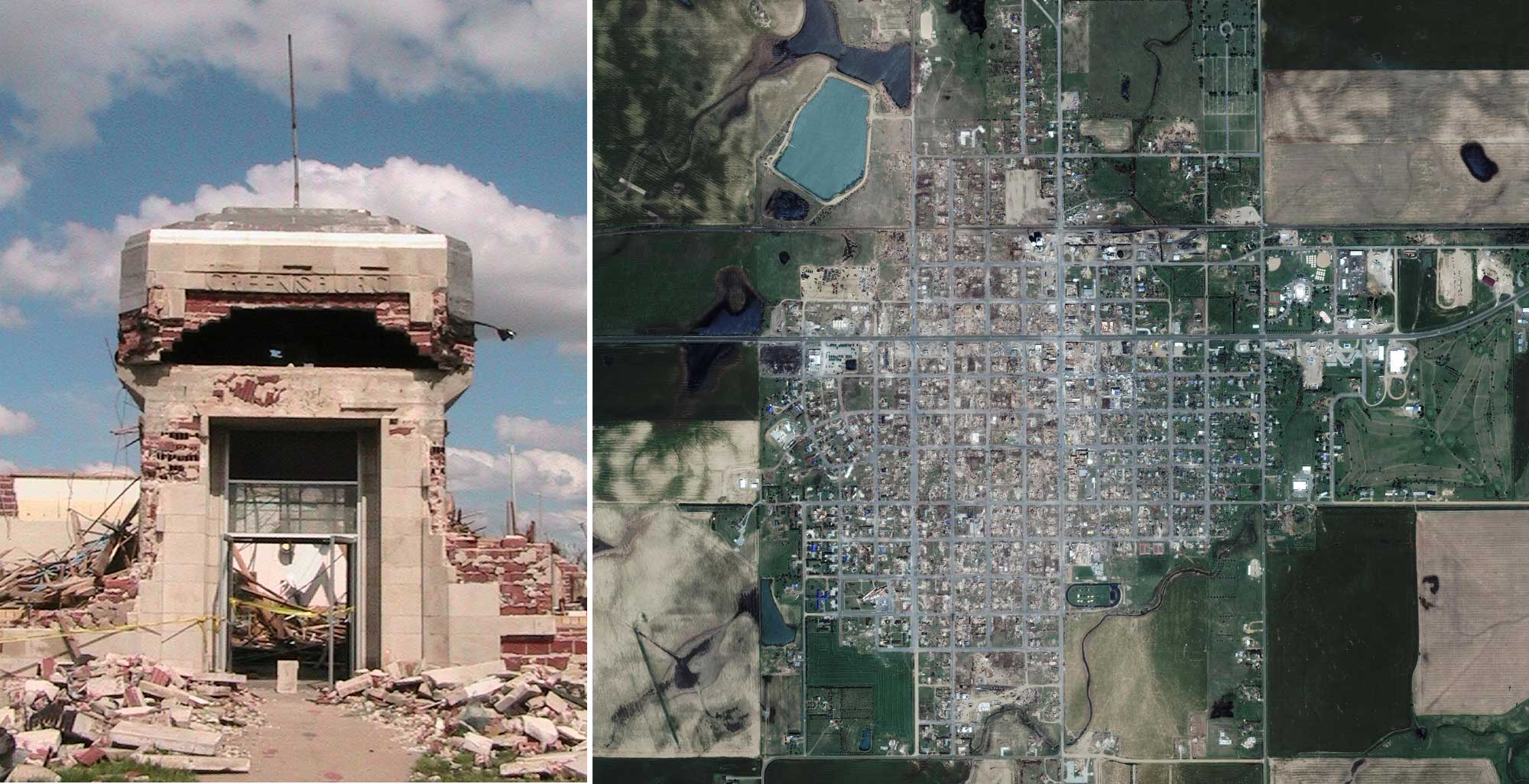
1/ Resilient Design
“It’s amazing thinking back ten years now. That experience driving into Greensburg had such a visceral impact on us. I’ll never forget the images of the trees sawed in half, the piles of rubble around town, the emptiness, the silence. We were there to listen, help, heal, and nurture.” JAMES PFEIFFER
We first arrived in Greensburg to help the community better understand their options, including whether or not to rebuild. Through deep engagement, we learned the root causes of the city’s challenges outside of the immediate disaster and physical design — the slow economic decline of agricultural communities in the Midwest.
 THE FIRST COMMUNITY MEETINGS WERE HELD IN CIRCUS TENTS ERECTED TO TEMPORARILY REPLACE THE TOWN’S STRUCTURES
THE FIRST COMMUNITY MEETINGS WERE HELD IN CIRCUS TENTS ERECTED TO TEMPORARILY REPLACE THE TOWN’S STRUCTURES
City leadership, the school district, kids and families, and others in the community expressed perseverance in rebuilding and a need to rethink the way a rural community can exist. They desired a future where all aspects of the town work cohesively and successfully to foster a rural lifestyle for future generations.
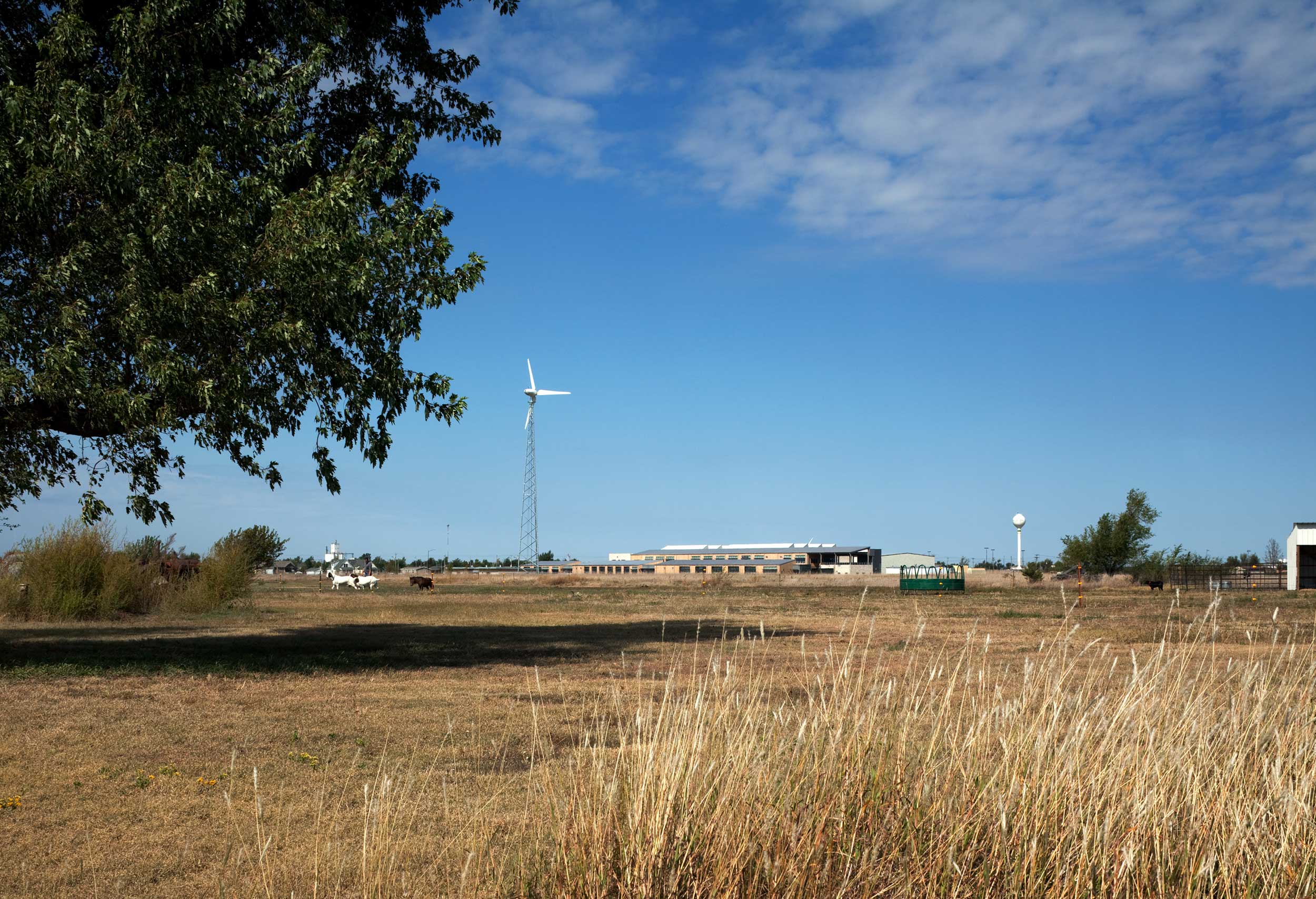 GREENSBURG IS 100% POWERED BY A WIND FARM IN THE TOWN, USING WINDMILLS SIMILAR TO THIS ONE, PICTURED BY THE K–12 SCHOOL
GREENSBURG IS 100% POWERED BY A WIND FARM IN THE TOWN, USING WINDMILLS SIMILAR TO THIS ONE, PICTURED BY THE K–12 SCHOOL
In 2007, Greensburg’s City Council became the first city in the country to adopt a resolution that all city projects would be built to LEED Platinum standards and exceed the baseline code for energy efficiency by 42%. Today, 100% of energy for the city is produced by a city-owned wind farm that is also a net exporter of renewable energy.
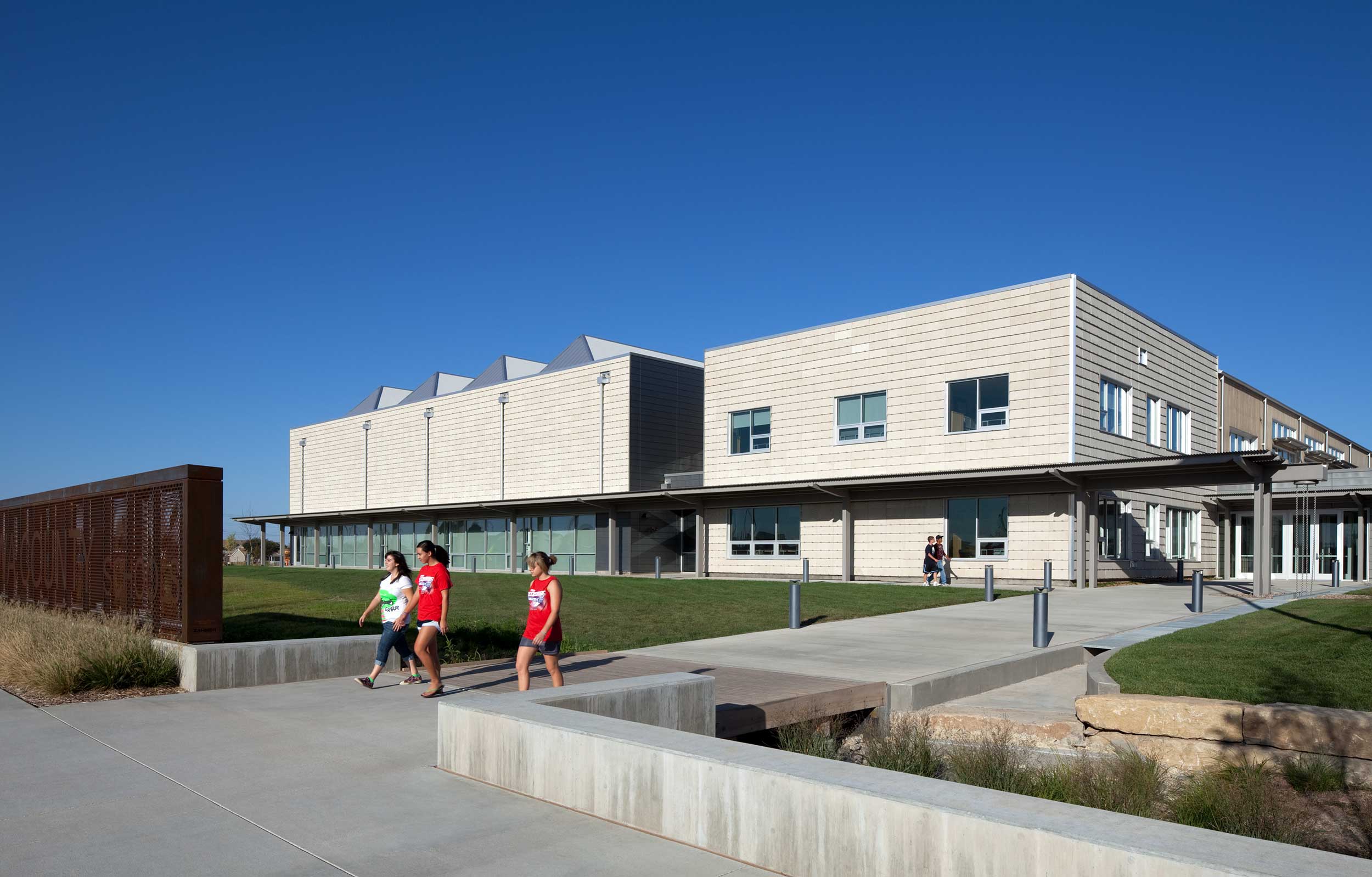 THE ENTRY TO THE GREENSBURG K–12 SCHOOL FACILITY, KNOWN AS KIOWA COUNTY SCHOOLS
THE ENTRY TO THE GREENSBURG K–12 SCHOOL FACILITY, KNOWN AS KIOWA COUNTY SCHOOLS
Many of the spaces that are present in the community are used symbiotically. The community shares in the gathering spaces and the library provided by the school, building deep connections that unite the town.
Greensburg’s forward-thinking perseverance is a model of resilient development and has guided BNIM’s work for many years, but was strengthened through our work with the community. We’re now working with urban communities, rural communities, and tribal communities to understand the root causes of their deepest challenges — not only what has most recently occurred, but the trajectory and trends of the connected solutions that will build the most momentum for their future.
 GREENSBURG CITY HALL
GREENSBURG CITY HALL
2/ Culture of Design
“It was incredibly exciting, as a young person, to hear that BNIM was a part of the conversation and opportunity to rebuild. Greensburg wasn’t “doing” sustainability; they were doing what was right for their community.” SAM DEJONG
The work happening in Greensburg was magnetic to the general public, as well as to our peer audiences. It informed our recruitment opportunities and stimulated innovation in process and approach. BNIM became full partners with the community throughout the process. Our work created unique and unexpected situations: we helped solicit building material donations; worked with federal agencies; and developed deep relationships that remain.
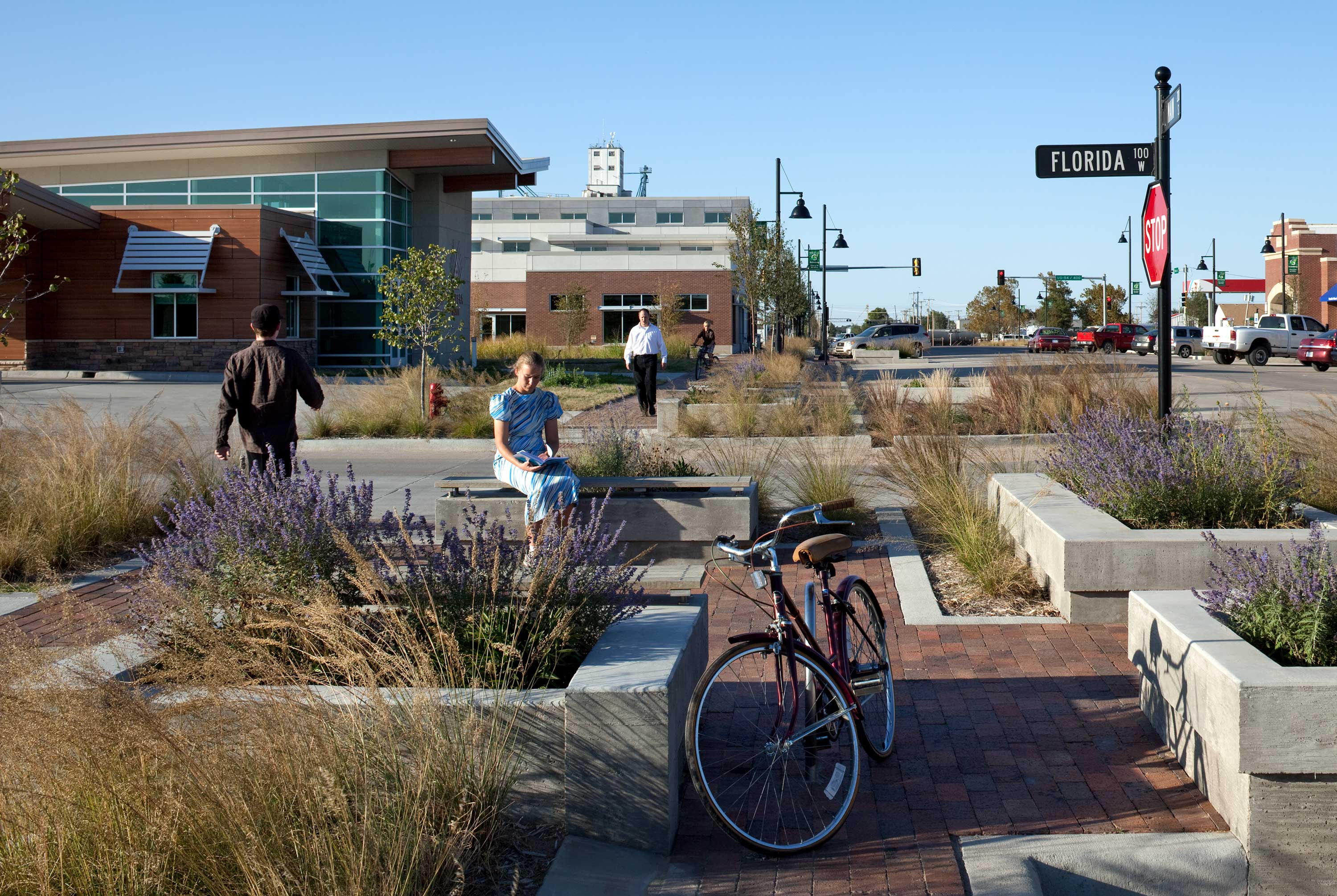 THE SUSTAINABLE COMPREHENSIVE MASTER PLAN DEFINED THE CENTRALIZATION OF THE THE TOWN AROUND MAIN STREET, WHICH IS ENHANCED BY A PEDESTRIAN-FRIENDLY STREETSCAPE
THE SUSTAINABLE COMPREHENSIVE MASTER PLAN DEFINED THE CENTRALIZATION OF THE THE TOWN AROUND MAIN STREET, WHICH IS ENHANCED BY A PEDESTRIAN-FRIENDLY STREETSCAPE
Young people gravitate toward impactful and authentic work, and that became apparent in our hiring process. Sustainability was at the forefront of university design courses. Greensburg was implementing these practices in an unprecedented, holistic manner that attracted young talent to BNIM.
As recently as 2017, a prospective employee cited our work in Greensburg as the reason she pursued architecture. This young person felt she could make a difference in communities by pursuing the path of design. Greensburg built our reputation and practice into a culture of design foremost-focused on people.
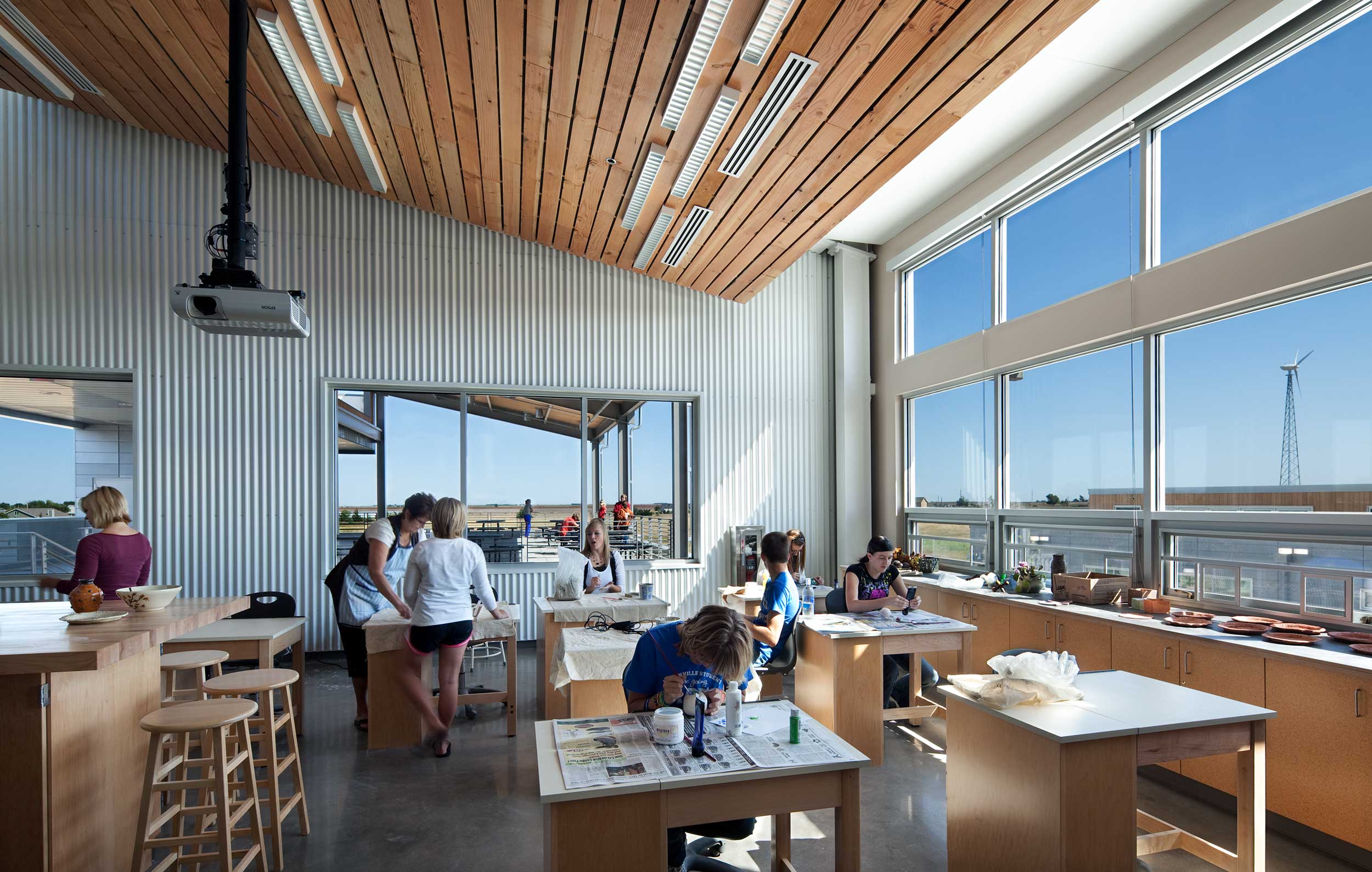 THE CLASSROOMS AT KIOWA COUNTY SCHOOLS ARE FILLED WITH DAYLIGHT AND LOOK OUT TO THE SURROUNDING LANDSCAPE
THE CLASSROOMS AT KIOWA COUNTY SCHOOLS ARE FILLED WITH DAYLIGHT AND LOOK OUT TO THE SURROUNDING LANDSCAPE
3/ Human-Purposed Design
“BNIM considers people at the core of our work. We’re not only creating buildings and spaces — we’re creating experiences and memories. That’s not something you put on paper. You can’t draw it or replicate it in the model. You have to get to know people.” JOE KEAL
Greensburg transformed the way we consider people in our designs, helping found our human-purposed approach — a deep commitment to humanity as the origin of inspiration, innovation, and prosperity. We worked collaboratively with the client to design a reimagined — yet, familiar and authentic — city with a profound positive impact going forward.
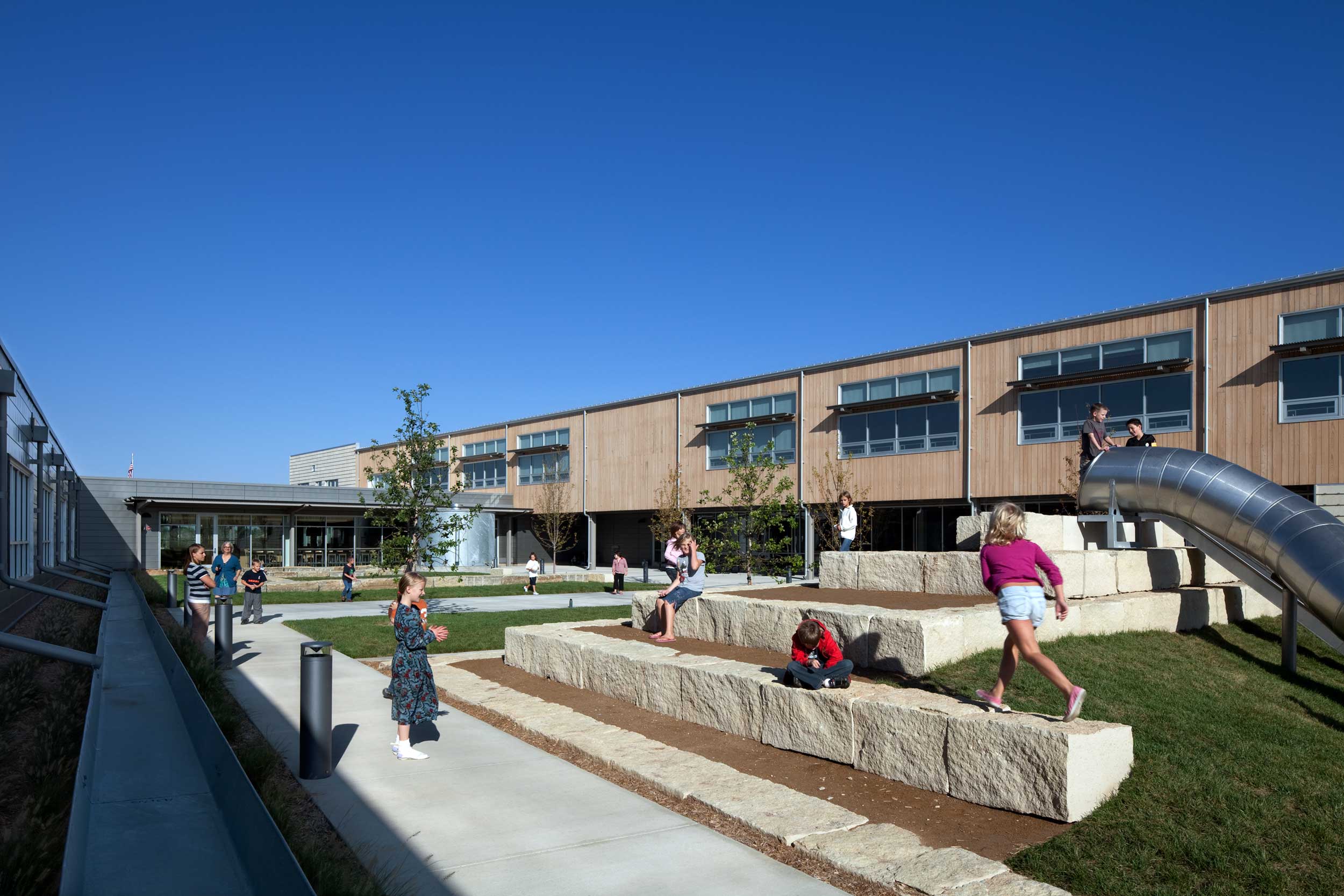 THE COURTYARD AT THE SCHOOL CAN BE USED FOR GATHERING AND PLAY
THE COURTYARD AT THE SCHOOL CAN BE USED FOR GATHERING AND PLAY
We focused on creating experiences that uplift, and make organizations and people better through intentional design. The rebuilt school, for example, was designed placing emphasis on exposure to daylight in all of the learning environments, a strategy that has been tied to increased academic performance. Elevating human potential through design has since become a normal part of our process.
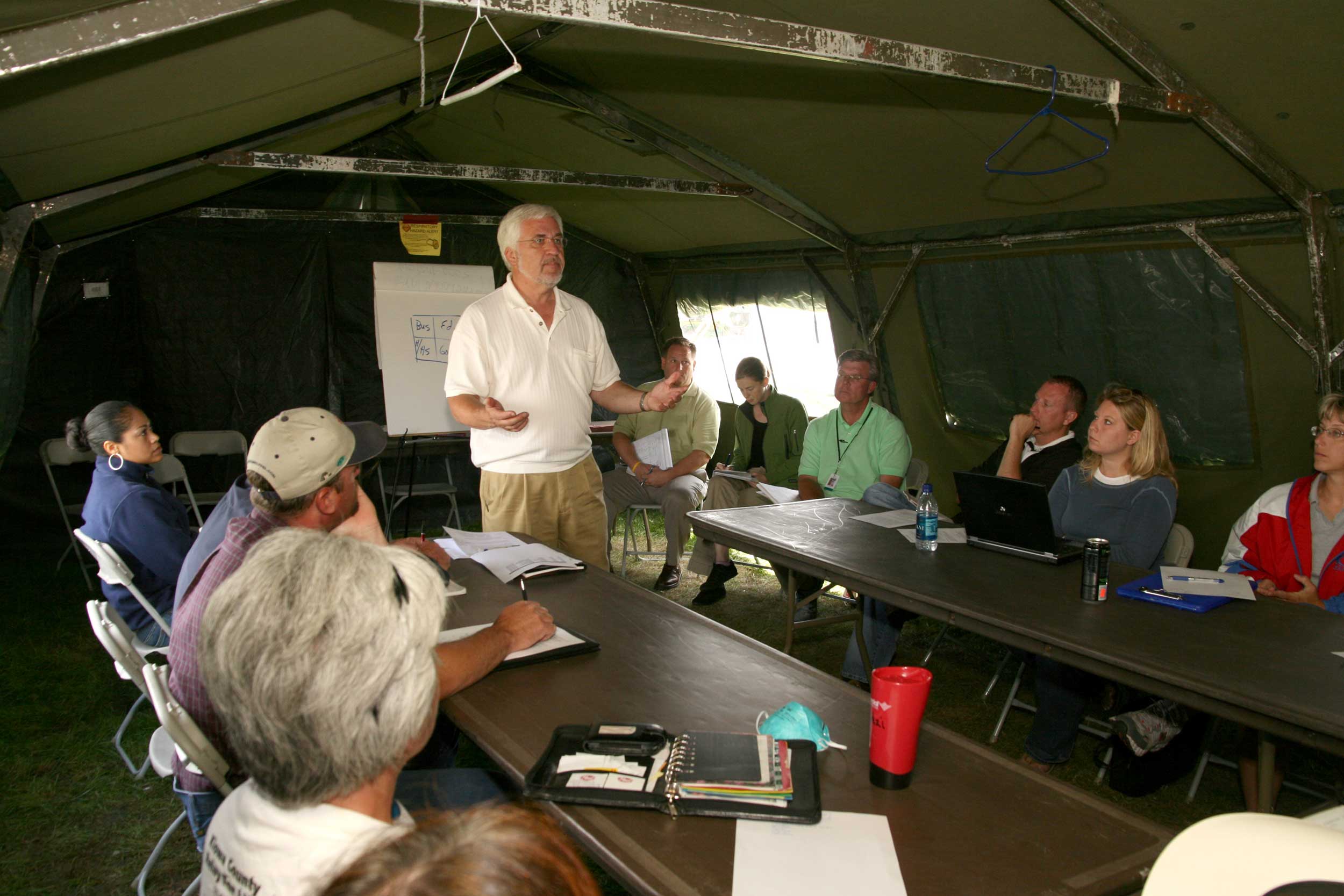 COMMUNITY MEETINGS BROUGHT TOGETHER ALL DISCIPLINES AND STAKEHOLDERS
COMMUNITY MEETINGS BROUGHT TOGETHER ALL DISCIPLINES AND STAKEHOLDERS
4/ Integrated Design
“We work with our communities to understand the best solutions for them. We listen to that genius of the community and bring the integrated resources that will help them achieve their highest aspirations.” CHRISTINA HOXIE
Greensburg redefined integrated design as a core tenet of our practice. A comprehensive team of design disciplines, as well economic experts, long-term residents, government representatives, and others pulled together to reshape this community. It was the first project where all the disciplines were so closely woven from day one to function as a holistic team.
We learned we could better help the community translate their vision for recovery, and then for the long-term, by integrating all facets of design in the process and in the design outcomes.
BNIM is Building Positive by integrating our practice and working to make peoples’ lives better through the ideas of transformation, authenticity, and delight. In helping Greensburg redefine its future, the community helped redefined our future, as well.
Visit the the Projects that reimagined Greensburg:
Greensburg Comprehensive Sustainable Master Plan
John Deere BTI Dealership
Greensburg Streetscape
Greensburg Business Incubator
Greensburg City Hall
Kiowa County K–12 Schools
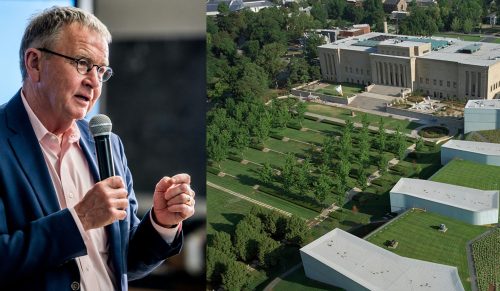
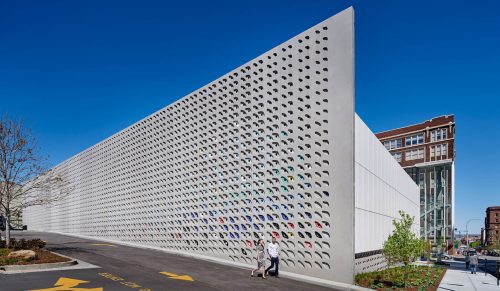
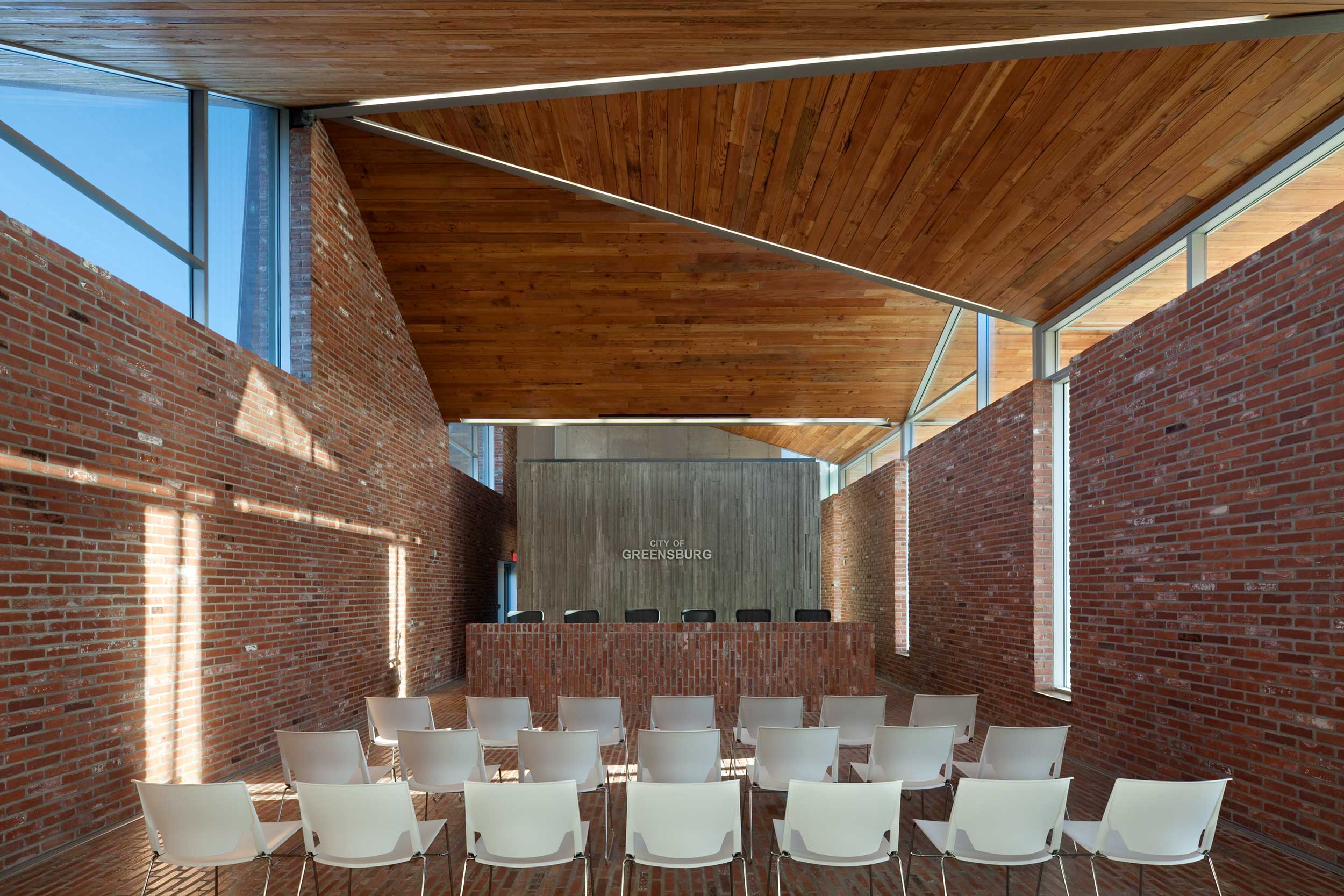 GREENSBURG CITY HALL
GREENSBURG CITY HALL